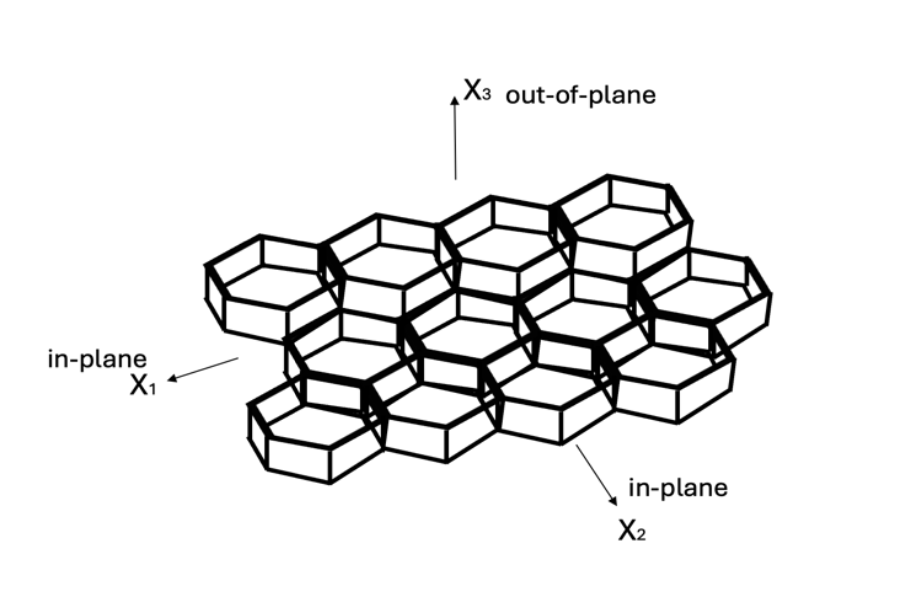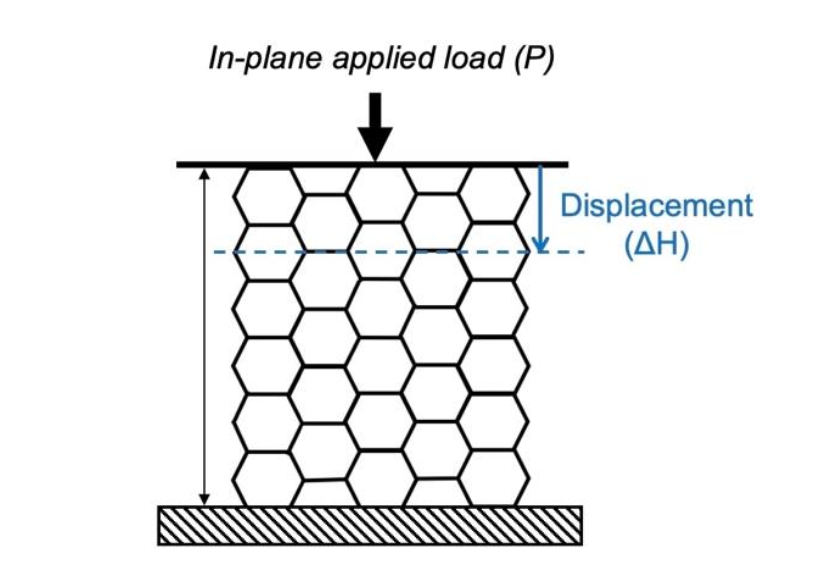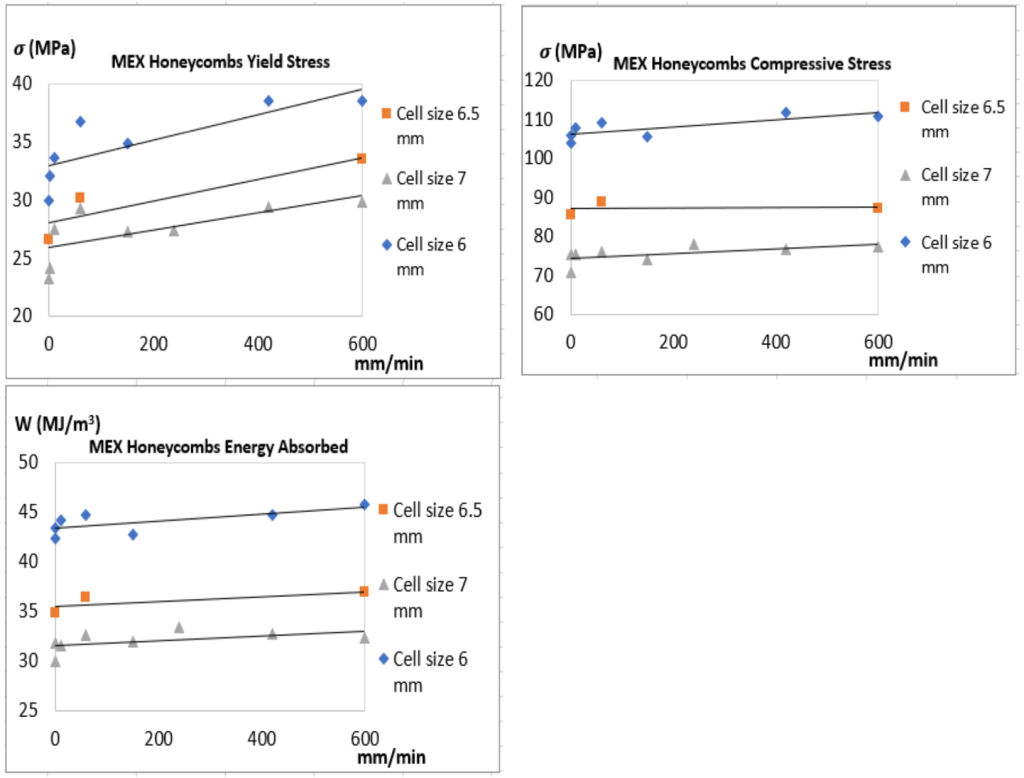Researchers from the University of Limerick, Ireland, have assessed the mechanical performance of metal 3D printed honeycomb lattices when pressure is applied at different rates.
Due to their impressive mechanical characteristics, honeycomb structures have been increasingly adopted for engineering applications in various industries. These include the aerospace and biomedical sectors.
In what is said to be the first study of its kind, these structures were 3D printed in 316L stainless steel using laser powder bed fusion (LPBF) and material extrusion (ME) methods. Experimentation was then conducted to determine the effects of different load rates on the metal lattices, with particular interest in those produced with ME.
Digital image correlation (DIC), a specialized imaging method, was used to observe and analyze how these structures failed when lateral pressure was applied at different speeds. Statistical models and mathematical equations were also employed to predict this behavior.
Through this testing, the studies’ authors, Dr Solomon Obadimu and Associate Professor Kyriakos Kourousis, hoped to “bridge the existing gap” in the understanding of material extrusion metal 3D printing. Specifically, they sought to determine whether ME can be used to produce reliable metal structures, and if their mechanical properties differ from those produced with LPBF.
The researchers’ claim that their findings, published in the journal Engineering Structures, “not only contributes to the advancement of AM technologies but also holds significant implications for engineering applications in the ever-evolving engineering industry.”

The impact of load rate on metal 3D printed honeycombs
Metal additive manufacturing is a technology that is being increasingly adopted among a number of industrial applications, and has generated growing attention from academic researchers. According to Obadimu and Kourousis, this attention has been largely focused on LPBF technology. As such, gaps remain in the understanding of other methods such as ME, which is said to offer an affordable alternative to laser-based approaches.
The University of Limerick researchers have attempted to bridge this gap by assessing the impact of quasi-static load rates on ME-3D printed metal honeycomb lattices. When used in real-word applications, these structures are often subjected to significant compressive pressure.
In previous studies, the University of Limerick researchers highlighted that key characteristics of honeycombs, such as cell wall thickness, cell size and relative density, correlate to their compressed behaviour. This includes the predictability of their performance under pressure using empirical models and equations.
Building on these findings, the researchers used material extrusion 3D printing to produce metal honeycomb structures with cell sizes varying from 6mm to 7mm. LPBF was also used to 3D print single-sized honeycombs measuring 2.45mm, which were compared to the parts made with ME.
Compressive loading was then applied to the sides of the 3D printed honeycombs at rates ranging from 0.5 mm/min and 600 mm/min. During this testing, the failure modes of the lattices were observed and analyzed using DIC.

The researchers highlighted a number of key findings from this testing. Firstly, both the ME and LPBF-3D printed honeycombs were affected by the speed at which they were compressed. Increases in energy absorbed per unit volume, yield and compressive stresses directly correlated to increasing load rate. However, the elastic modulus and densification strain of the structures did not change with different compression speeds.
For the honeycombs 3D printed using ME, the researchers also found that smaller cell sizes (6mm) with higher density and stiffness exhibited greater strength when compressed than their larger counterparts (6.5mm and 7mm). It was also found that temperatures increase during the compression process. causing thermal softening.
What’s more, the DIC images showed that the ways in which the honeycomb deformed was determined by the speed at which they were compressed. Three particular deformation patterns were observed. These include a vertical ‘I’ shape, an ‘X’ shape band, and a diagonal shear type of deformation.
Finally, it was found that load rate sensitivity could vary among honeycombs with the same shape and size. Obadimu and Kourousis also concluded that the compressive behavior of the structures was influenced by the process with which they were 3D printed. For instance, honeycombs produced with material extrusion showed more variability in their behavior when compressed.
Following experimental analysis, the researchers also worked to validate their findings using existing empirical models, which largely reflected the experimental results. The study authors also proposed a new model which accounts for strain rate effects within the quasi-static loading regime during compressive loadings. In effect, the new model allows researchers to better predict how structures react under pressure when compressed at very slow speeds.

3D printed metal lattices under the spotlight
Research into the strength and mechanical properties of metal 3D printed lattices is a growing area.
Earlier this year, researchers from RMIT University 3D printed a titanium lattice structure that was found to be 50% stronger than the strongest alloy with similar density. Produced using powder bed fusion, the high-strength 3D printed metal lattice is a “metamaterial.” These artificial, cellular materials are specially designed to possess unique mechanical and multifunctional properties.
The RMIT team’s metamaterial was produced using the titanium alloy alloy Ti-6Al-4V, and features a unique hollow-strut lattice (HLS) design. This is said to combine high strength with minimal weight. The researchers believe that their findings offer potential for the production of 3D printed medical implants and aircraft or rocket parts.
Elsewhere, University of Sheffield and Imperial College London (ICL) developed 3D printed crystal-inspired metal lattice structures which offer high durability and damage tolerance. The internal structure of the so-called ‘meta-crystals’ mimic the ultra-strong internal structure of crystals.
Produced using metallic alloys, the 3D printed lattices are said to be highly energy absorbing. Moreover, through testing, the researchers found that the structures can withstand seven times more energy than materials which mimic single-crystal structures.
Want to help select the winners of the 2024 3D Printing Industry Awards? Join the Expert Committee today.
What does the future of 3D printing hold?
What near-term 3D printing trends have been highlighted by industry experts?
Subscribe to the 3D Printing Industry newsletter to keep up to date with the latest 3D printing news.
You can also follow us on Twitter, like our Facebook page, and subscribe to the 3D Printing Industry Youtube channel to access more exclusive content.
Featured image shows a schematic representation of the honeycomb, the in-plane (X1 and X2) and out-of-plane (X3) loading directions. Image via Dr Solomon Obadimu.


